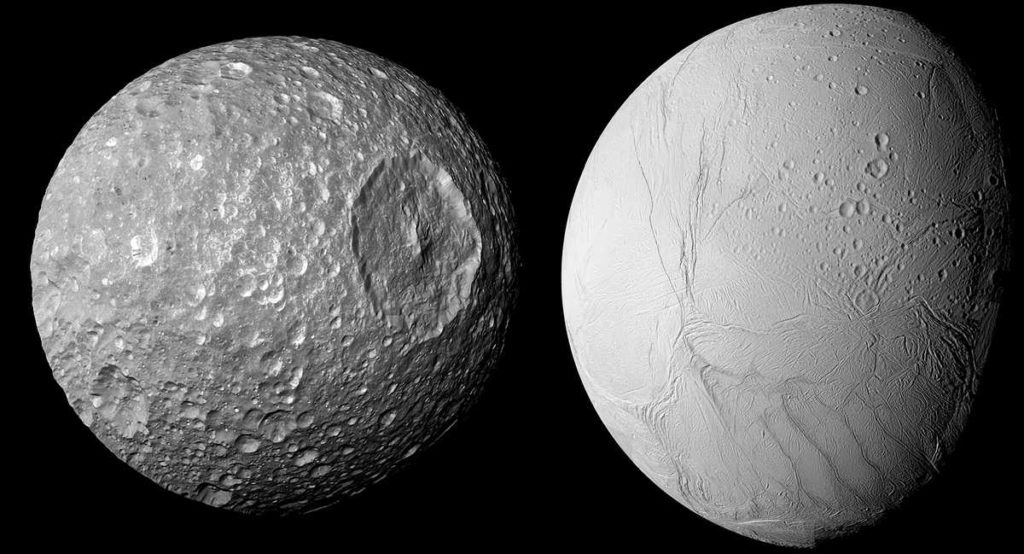
Could life be found in frozen sea spray from moons orbiting Saturn or Jupiter? New research finds that life can be detected in a single ice grain containing one bacterial cell or portions of a cell...
Read More

Could life be found in frozen sea spray from moons orbiting Saturn or Jupiter? New research finds that life can be detected in a single ice grain containing one bacterial cell or portions of a cell...
Read More
Discovery could point to a new class of ‘stealth’ ocean worlds. A Southwest Research Institute scientist set out to prove that the tiny, innermost moon of Saturn was a frozen inert satellite and instead discovered compelling evidence that Mimas has a liquid internal ocean...
Read MoreThe long-lived international Cassini mission has revealed a surprising feature emerging at Saturn’s northern pole as it nears summertime: a warming, high-altitude vortex with a hexagonal shape, akin to the famous hexagon seen deeper down in Saturn’s clouds. This suggests that the lower-altitude hexagon may influence what happens up above, and that it could be a towering structure spanning hundreds of kilometres in height.
When Cassini arrived at the Saturnian system in 2004, the southern hemisphere was enjoying summertime, while the northern was in the midst of winter. The spacecraft spied a broad, warm, high-altitude vortex at Saturn’s southern pole, but none at the planet’s northern pole.
A new long-term stud...
Read More
These raw, unprocessed images of Saturn’s moon Pan was taken on March 7, 2017 by NASA’s Cassini spacecraft. Image Credit: NASA/JPL-Caltech/Space Science Institute
New raw, unprocessed images of Saturn’s tiny moon, Pan, were taken on March 7, 2017, by NASA’s Cassini spacecraft. The flyby had a close-approach distance of 24,572 kilometers (15,268 miles).
These images are the closest images ever taken of Pan and will help to characterize its shape and geology.
The Cassini-Huygens mission is a cooperative project of NASA, ESA (European Space Agency) and the Italian Space Agency. NASA’s Jet Propulsion Laboratory in Pasadena, California, manages the mission for the agency’s Science Mission Directorate in Washington...
Read More
Recent Comments